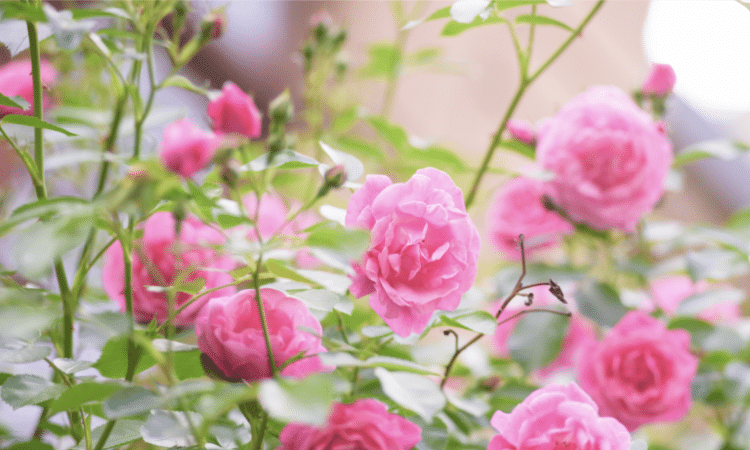The flower you need to plant just a few centimetres from your roses to prevent powdery mildew and grow beautiful roses.

Beneficial combinations in the garden have been recognized for centuries. Some plants coexist harmoniously, optimizing their growth and resistance to disease. This is precisely the case with roses, which are often susceptible to fungal diseases such as powdery mildew. To prevent this fungus from harming your roses, combining them with specific plants is an effective, natural solution.
Ornamental garlic: a natural protector for roses
If you combine ornamental garlic (Allium aflatunense or Allium giganteum) with your rosebush, it’ll help keep powdery mildew at bay. These plants also add an aesthetic touch to your garden, producing magnificent purple, violet, or crimson inflorescences in early summer.
Ornamental garlic’s protective role comes from its natural antifungal properties. This plant helps keep away fungal diseases, including powdery mildew. Powdery mildew makes the leaves of rose bushes look white and felt-like, which is bad for their looks and health.
Ornamental garlic also helps stop other fungal infections, like marsonia, which is also called “black spot disease” and attacks rose foliage. So, adding this plant to your rose beds can be good for your garden in a few ways.
To optimize the synergy between roses and ornamental garlic, plant the latter in close proximity to the roses. Alliums tolerate a variety of soils and require no special care, making them ideal companions for rose bushes.
Legumes: dynamism and fertility in the garden
Legumes, such as beans, peas and broad beans, improve the soil by injecting nitrogen, an essential nutrient for plant growth. Although roses are not directly related to legumes, growing these plants in close proximity can improve the overall health of your garden.
The nitrogen released by legumes promotes the growth of many other plants, including grasses, tomatoes, carrots, potatoes, cabbages and cucumbers. However, legumes and bulbous plants such as onions, shallots and leeks do not cohabit well together.
In fact, these bulbous vegetables deploy their own defenses to repel certain pests, notably the carrot fly, thanks to their distinctive scent. So plant shallots or onions near your carrots for optimum protection.
Aromatic herbs and protective flowers: rose allies
Incorporating aromatic herbs into your garden can offer many benefits. Thyme, rosemary, mint, basil – all are not only tasty, but also effective at keeping pests such as aphids and ants at bay.
Scattering clumps of these herbs among vegetables or rose bushes helps maintain a biodiverse balance, essential for a healthy garden. This diversity helps stop parasites attracted by a particular species.
India carnations, also known as tagetes, are well known for preventing the proliferation of nematodes, small worms that attack vegetable roots. Plant these flowers in rows between vegetables or at the edges of your beds for effective protection.
Similarly, marigolds, with their bright colors, attract butterflies and other pollinating insects while sharing similar anti-parasite properties to marigolds. Sowing flowers such as borage, cosmos, mallows or poppies can therefore be of great benefit to the health of your garden.
Nasturtiums, for their part, are particularly effective in keeping black aphids away from beans and broad beans. By planting a few nasturtiums close to these vegetables, you can avoid an aphid infestation, while adding colorful flowers to your garden.
Tips for a healthy, flourishing garden
To maintain the beauty and health of your garden, it’s vital to implement a few natural tricks. Mixing different plant species, choosing natural allies such as ornamental garlic or aromatic herbs, and using protective flowers such as marigolds or marigolds, all help to create a hardy, aesthetically pleasing garden.

